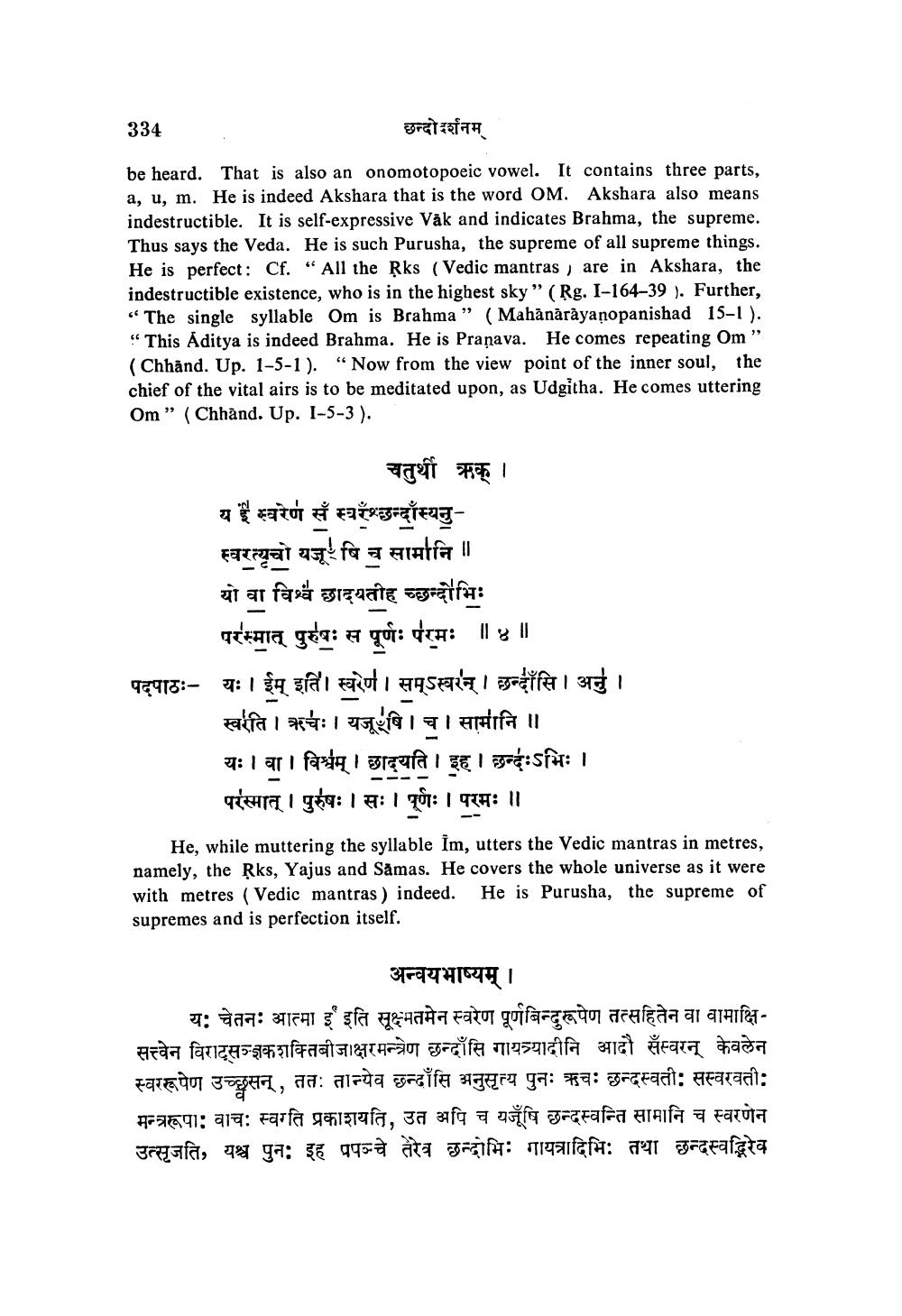________________
334
छन्दोदर्शनम
be heard. That is also an onomotopoeic vowel. It contains three parts, a, u, m. He is indeed Akshara that is the word OM. Akshara also means indestructible. It is self-expressive Vak and indicates Brahma, the supreme. Thus says the Veda. He is such Purusha, the supreme of all supreme things.
He is perfect: Cf. “All the Rks (Vedic mantras) are in Akshara, the indestructible existence, who is in the highest sky" (Rg. I-164-39). Further, " The single syllable Om is Brahma" (Mahānārāyanopanishad 15-1). " This Aditya is indeed Brahma. He is Pranava. He comes repeating Om" (Chhand. Up. 1-5-1). "Now from the view point of the inner soul, the chief of the vital airs is to be meditated upon, as Udgitha. He comes uttering Om" (Chhand. Up. 1-5-3).
चतुर्थी ऋक् । य ई स्वरेण सँ स्वरश्छन्दाँस्यनुस्वरत्यूचो यजू षि च सामानि || यो वा विश्व छादयतीह च्छन्दोभिः
परस्मात् पुरुषः स पूर्णः परमः ॥ ४ ॥ पदपाठः- यः । ईम् इति। स्वरेण । सम्ऽस्वरन् । छन्दाँसि । अनु ।
स्वरति । ऋचः । यजूषि। च । सामानि ॥ यः। वा । विश्वम् । छादयति । इह । छन्दःऽभिः । परस्मात् । पुरुषः। सः । पूर्णः । परमः ॥
He, while muttering the syllable İm, utters the Vedic mantras in metres, namely, the Rks, Yajus and Samas. He covers the whole universe as it were with metres (Vedic mantras ) indeed. He is Purusha, the supreme of supremes and is perfection itself.
अन्वयभाष्यम् । य: चेतनः आत्मा ई इति सूक्ष्मतमेन स्वरेण पूर्णबिन्दुरूपेण तत्सहितेन वा वामाक्षिसत्त्वेन विराट्स कशक्तिबीजाक्षरमन्त्रेण छन्दांसि गायत्र्यादीनि आदौ सँस्वरन् केवलेन स्वररूपेण उच्छसन् , तत: तान्येव छन्दांसि अनुसृत्य पुनः ऋचः छन्दस्वती: सस्वरवती: मन्त्ररूपा: वाच: स्वरति प्रकाशयति, उत अपि च यजूंषि छन्दस्वन्ति सामानि च स्वरणेन उत्सृजति, यश्च पुन: इह प्रपञ्चे तेरेव छन्दोभिः गायत्रादिभिः तथा छन्दस्वद्भिरेव




